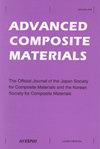对“用遗传算法优化CFRP等网格圆柱壳结构设计”的评述
IF 2.3
3区 材料科学
Q3 MATERIALS SCIENCE, COMPOSITES
引用次数: 0
摘要
本文章由计算机程序翻译,如有差异,请以英文原文为准。
Comment on ‘optimum structural design of CFRP isogrid cylindrical shell using genetic algorithm’
We comment on the paper published by Sakata et al., in J. Adv. Compos. Mater., 2018, 27, 35–51, which was in continuation of the previous work by Sakata and Ben in J. Adv. Compos. Mater., 2012, 21, 445–457. Although the experimental section in both works were identical, the reported numerical values of the linear buckling loads differed. In addition, all the specimens were manufactured using an identical process by employing silicone rubber mold and filament winding technique, and outer skin layers and stiffeners consisted of a fixed number of plies. Nonetheless, different shell thicknesses and stiffeners cross-sectional areas were reported for the specimens. Since the buckling behavior of cylindrical shells is highly sensitive to their thickness, the difference in the reported numerical linear buckling loads of the mentioned studies could be due to different thickness values used as inputs for their numerical analyses. In order to address this subject, the present study aimed to provide complete and comprehensive data on the buckling behavior of unstiffened and grid-stiffened cylindrical shells with the same material properties and geometrical dimensions but various thicknesses. The presented results can be used as a benchmark for future studies.
求助全文
通过发布文献求助,成功后即可免费获取论文全文。
去求助
来源期刊

Advanced Composite Materials
工程技术-材料科学:复合
CiteScore
5.00
自引率
20.70%
发文量
54
审稿时长
3 months
期刊介绍:
"Advanced Composite Materials (ACM), a bi-monthly publication of the Japan Society for Composite Materials and the Korean Society for Composite Materials, provides an international forum for researchers, manufacturers and designers who are working in the field of composite materials and their structures. Issues contain articles on all aspects of current scientific and technological progress in this interdisciplinary field. The topics of interest are physical, chemical, mechanical and other properties of advanced composites as well as their constituent materials; experimental and theoretical studies relating microscopic to macroscopic behavior; testing and evaluation with emphasis on environmental effects and reliability; novel techniques of fabricating various types of composites and of forming structural components utilizing these materials; design and analysis for specific applications.
Advanced Composite Materials publishes refereed original research papers, review papers, technical papers and short notes as well as some translated papers originally published in the Journal of the Japan Society for Composite Materials. Issues also contain news items such as information on new materials and their processing."
 求助内容:
求助内容: 应助结果提醒方式:
应助结果提醒方式:


